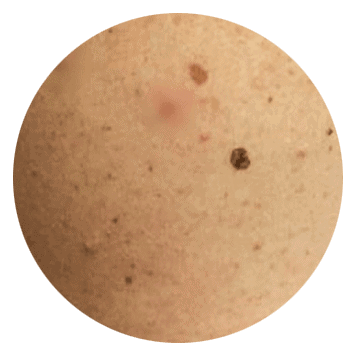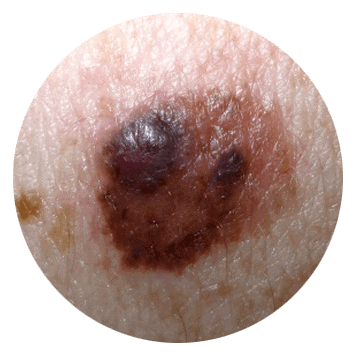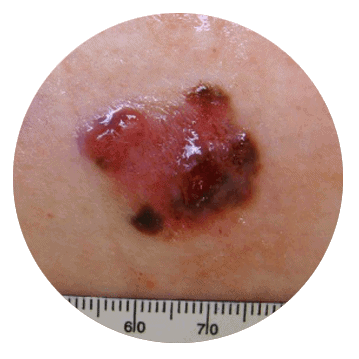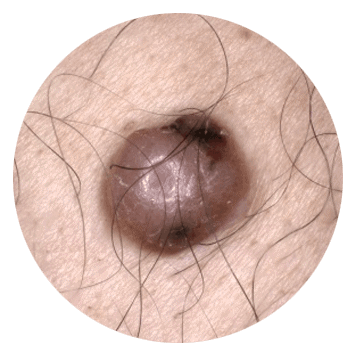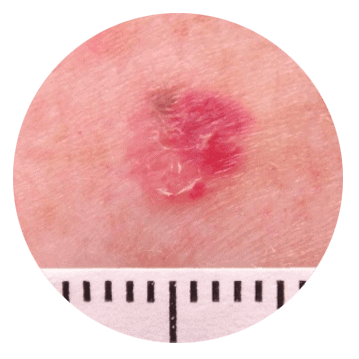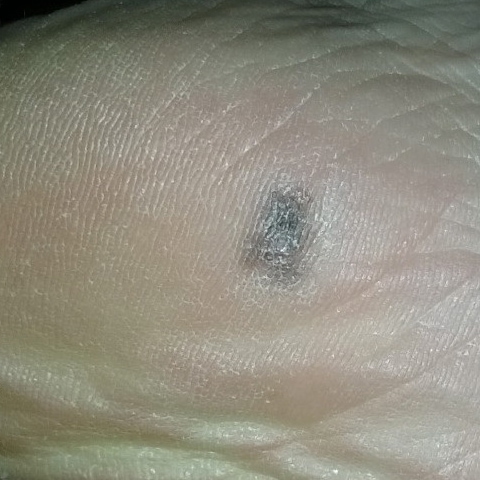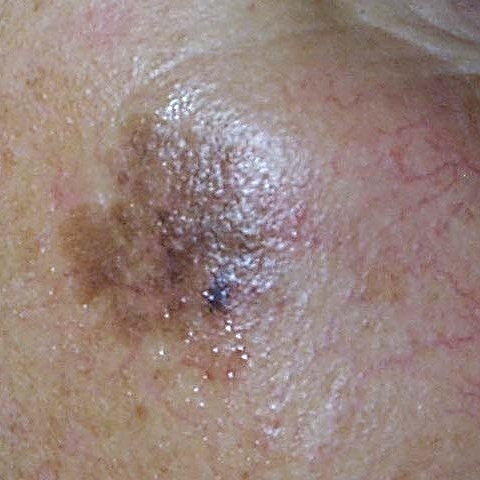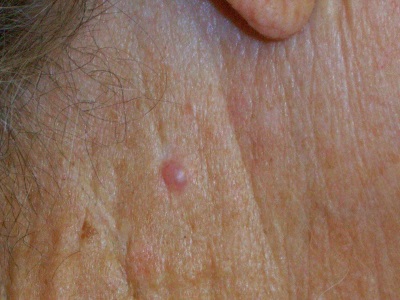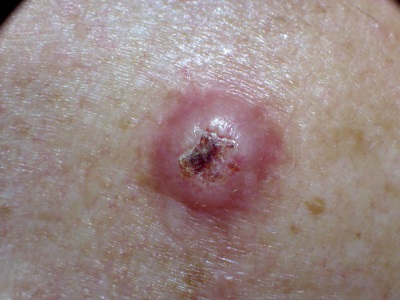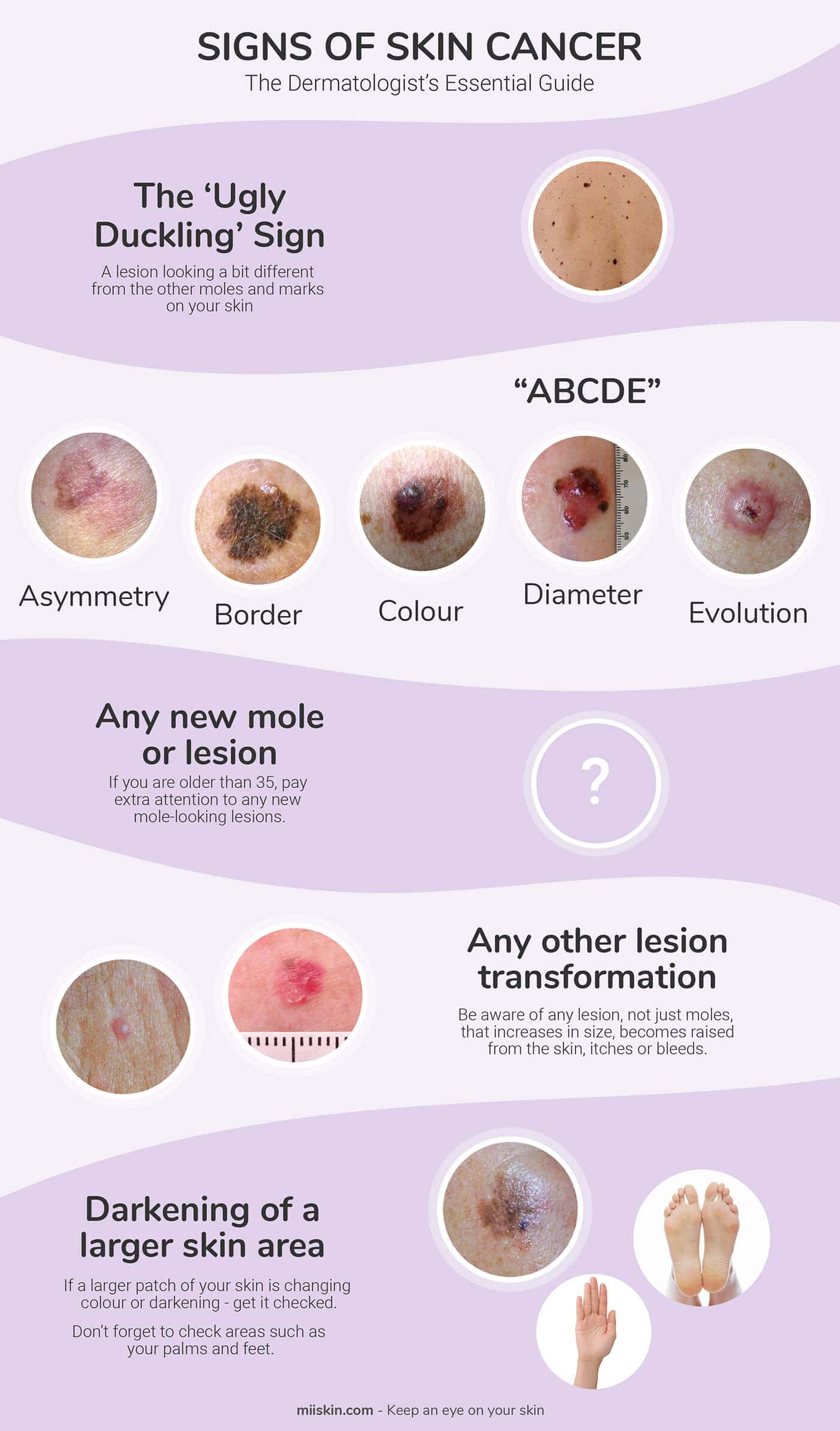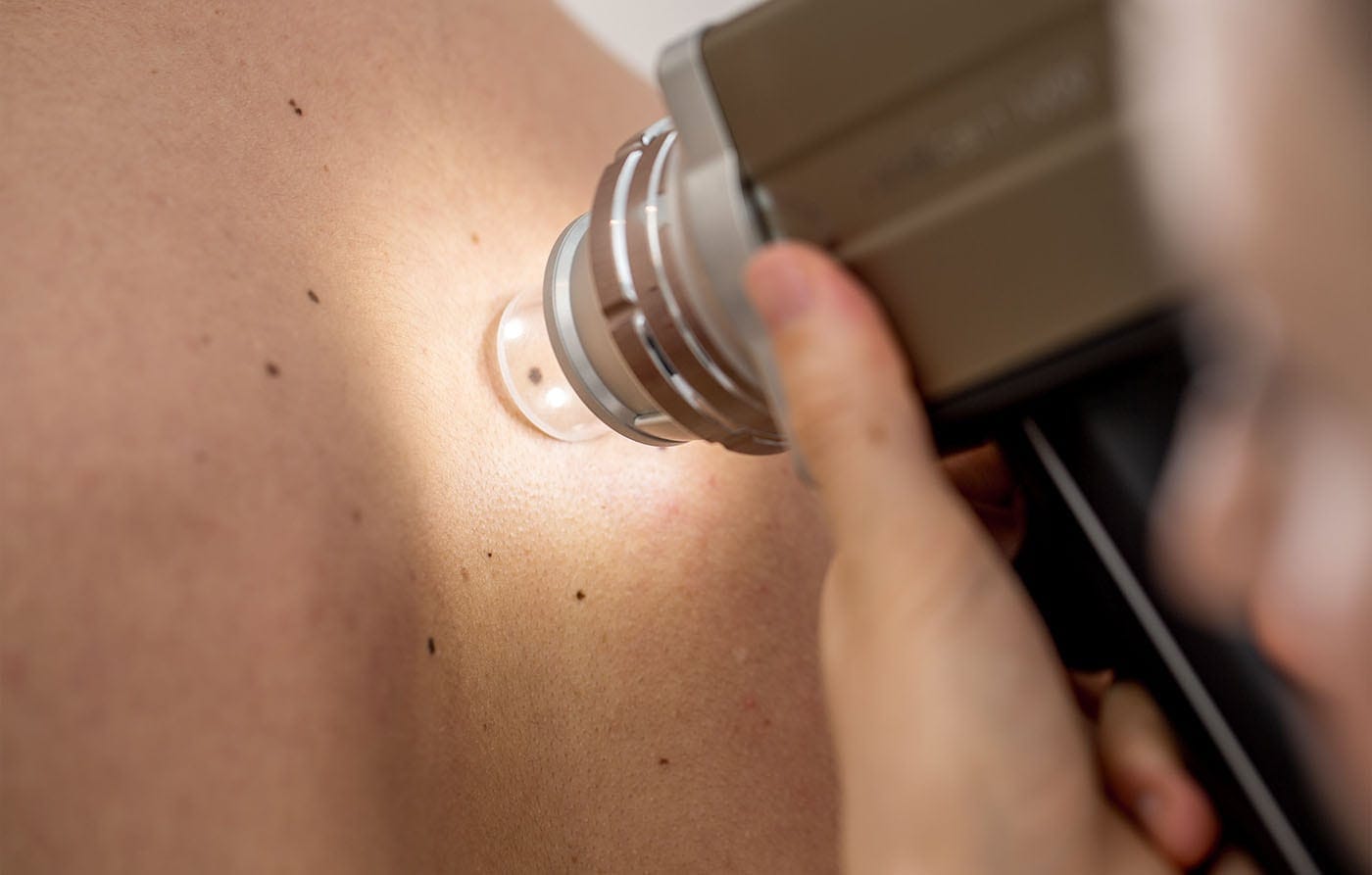Signs of Skin Cancer – The Dermatologist’s Essential Guide
Most skin cancers can be cured if caught early. Get to know the symptoms of skin cancer.
Medically reviewed by Dr Amanda Oakley from DermNet NZ.
Educate yourself and learn about the symptoms and signs of skin cancer to better detect any suspicious moles and skin growths early.
This Dermatologist’s Guide will take about five minutes to go through. It contains easy to read descriptions of the signs of skin cancer. Share it with anyone you think should know the signs.
(Video walk-through of this article. With sound.)
Frequent Questions Asked About Skin Cancer
When people think of skin cancer, they often have these questions:
- What is skin cancer and who gets it?
- Can you die from skin cancer and is skin cancer curable?
- What are the early warning signs of skin cancer?
We’ll dive into these questions in this guide and at the end go through the steps you should take to start regularly checking your skin.
What Is Skin Cancer and Who Gets It?
Skin cancer is an uncontrolled growth of skin cells and most often develops on skin exposed to ultraviolet (UV) radiation. It can also develop on parts of the skin that have not been directly exposed to sunlight – especially in the presence of a weakened immune system.2
Many populations in various parts of the world are at risk of getting skin cancer but people with a certain skin type and family history (genetics) are at higher risk.3
Even though skin cancer sounds like and is a serious thing it helps a lot to catch it early.
We’ll explain below.
Can You Die from Skin Cancer and Is Skin Cancer Curable?
Not all skin cancers are equally dangerous. The main types of skin cancer are: basal cell carcinoma (BCC), squamous cell carcinoma (SCC), and melanoma.
Basal cell carcinomas and squamous cell carcinomas, or sometimes known as non-melanoma skin cancers, are less aggressive but early detection is still very important for the easiest treatment.
Melanoma is a more serious type of skin cancer and is prone to spreading in the body, but if recognized early, when it is still confined to the skin’s tissue, melanoma is also highly treatable. The survival rate of melanoma is 98.3% if it is caught in its earliest stages.4
So it pays to be aware.
Get to know your skin’s appearance and some of the symptoms of melanoma and other types of skin cancer.
What Are the Early Warning Signs of Skin Cancer?
The most common early sign of skin cancer is a change in the skin or a lesion such as a beauty spot, freckle or mole. Years of UV-exposure causes sun damage to the skin and with that your skin will change as you grow older. But as aging skin will always change, not all changes are signs of skin cancer.
Read on for the tips on what skin cancer signs to watch out for.
MIISKIN PROMO
Tracking your moles for changes?
Miiskin helps you routinely take full-body photos and close-ups of moles to look for new or changing moles and marks.

Signs of a Potential Skin Cancer
So we know that skin cancer types such as melanoma, basal cell carcinoma, and squamous cell carcinoma usually start as a change on your skin. It may, however, be difficult to remember if there has been a change in a lesion on your skin or if a lesion is warranted a closer check.
So look out for these six skin cancer symptoms.
And remember checking your skin for signs of skin cancer is not a one-off thing. Please take a look at this collection of skin cancer pictures by skin cancer type and go through the tips on creating your own skin checking routine.
1. The Ugly Duckling Sign – New Growths, Moles, Spots or Lesions
The most significant sign is a mark, mole or any new growth on the skin that looks different from the other spots on your skin. (An Ugly Duckling – A lesion looking a bit different from the other spots on your skin). With the uniqueness of each person comes the uniqueness of our skin and its moles and marks. But if a mole or mark stands out from the other lesions on your skin you should pay closer attention.
2. New Moles or Lesions When You’re Older Than 35
Below the age of 35 years, it is completely normal to develop new moles. After that age, it becomes less common. In adults, 71% of melanomas show up as new moles or marks on the skin.5 Be extra attentive to new mole looking lesions if you are over 35 and remember to check areas you don’t look at often, such as your back. Taking a photo of these difficult areas is recommended to discover any new lesions early.
3. Use the Melanoma ABCDE Approach
If you notice a mole on your skin and you find it worrying, it can be helpful to think about the ABCDE of suspicious moles:
(Skin cancer pictures supplied by DermNet NZ)
A – Asymmetry:
The two halves of the mole don’t look similar?
Every normal mole is different in shape and can’t be perfectly symmetrical, but if you were to draw a line through the middle of a mole, both halves should look similar and should have the same characteristics. If you notice that one half of the mole does not match the other half, then the mole is asymmetrical. The asymmetry in the mole doesn’t usually mean it’s something serious, but it would be good to keep a close eye on it.
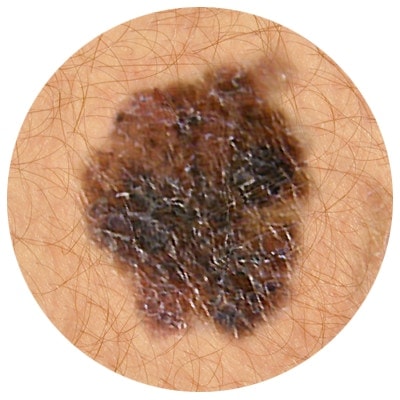
B – Border:
The borders of a normal mole usually have regular and clearly-defined shape. In abnormal lesions edges can be blurred, uneven, ragged or scalloped.
C – Colour:
Do you notice multiple shades and colours in the mole?
Check for lesions that contain a variety of colours. Melanomas can contain multiple shades of the same colour e.g red, white, blue brown, black, or tan.
D – Diameter:
Lesions bigger than a pencil eraser (6 mm or 1/4 inch) is a sign to look out for but not all melanoma lesions are larger than 6mm.
E – Evolving:
Moles that are evolving and changing over time i.e. changing in colour, size and shape warrants extra attention – especially pay attention to any new dome-shaped spot6) that don’t go away after a couple of weeks and consider having it checked by a physician.
If you have any historical photos of the lesion to show your physician, he or she may want to take the photos into consideration. It is important to remember that even if you discover one of the skin cancer signs above, the cause is unlikely to be melanoma. Still, if you are unsure, check in with your physician as soon as possible. If your GP is in doubt, they may refer you to a dermatologist for a further examination.
4. Any lesion That Goes Through a non-ABCD Transformation – Changing Shape, Colour or Size
Be aware of any lesion, not just moles, that increases in size or becomes raised from the skin. A typical sign to watch for is quick growth. A mole and the skin around it could also become red or start swelling.
5. A Larger Area Of Your Skin Is Darkening
If a larger patch of your skin is changing colour or darkening get it checked for early signs of skin cancer. Changes to look out for include; darkening discoloration in your face, on the underside of your feet and palms, as well as dark lines developing under your nails. Melanomas can also develop in areas of the skin that are rarely exposed to the sun.
6. Lesions That Don’t Heal
If you see any skin changes, pay extra attention to any atypical change. An important sign of some skin cancers is a sore or lesion that doesn’t heal within a few weeks including a lesion that itches or is bleeding. It may or may not look like a mole, so pay close attention as this could be a symptom of skin cancer.
A melanoma or a skin cancer may, unfortunately, look nothing like the pictures above or any other pictures found on the Internet.
Many patients are caught by surprise when the lesion they had, which turned out to be melanoma or another skin cancer, looked nothing like what they had expected.7
So if in doubt, get it checked out by a physician and get into the habit of looking out for changes in your skin as this is the most important sign of skin cancer to be aware of.
Recap – Common Signs of Skin Cancer:
- A new mole, mark, or growth that looks different from the other spots on your skin
- A mole or skin that changes in color: shades of tan, brown or black
- A mole that changes in color: shades of red, white and blue
- A mole with an irregular border, asymmetry, or change in size
- A larger patch of your skin is darkening or changing in colour
- A sore or lesion that doesn’t heal within a few weeks
- A lesion that itches or is bleeding
Make It a Routine to Check for Skin Changes and Signs and Symptoms of Skin Cancer
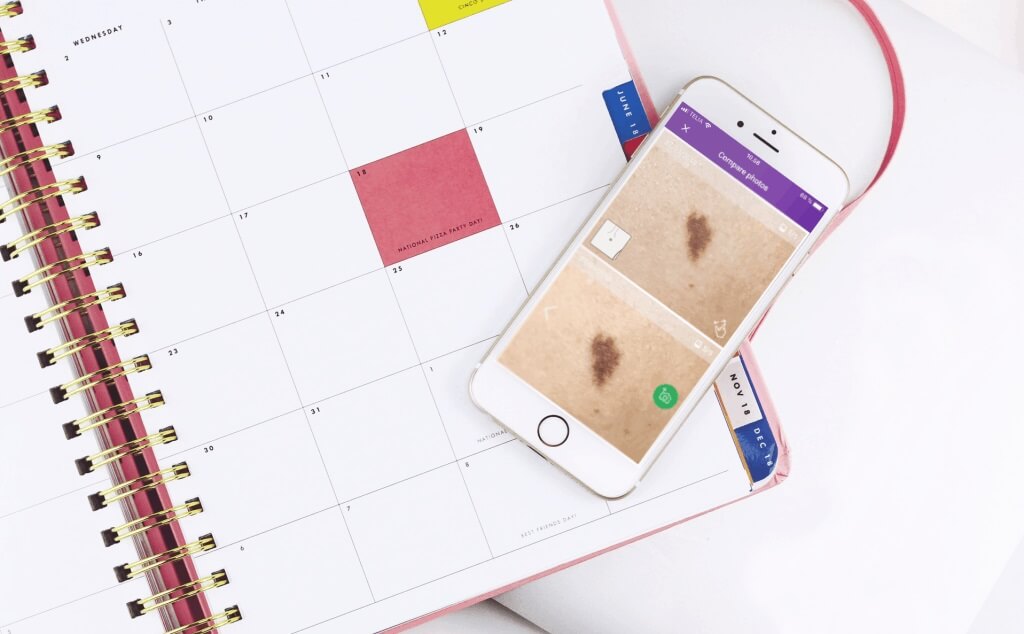
Your skin is as unique as you are, so it’s important to create your own skin checking routine and to pay attention to any changes in your skin.
Some people in high-risk groups may see a dermatologist or another specialist for yearly checks, but for most people this isn’t recommended and specialists are, unfortunately, in short supply. Yearly checks may also be a bit too infrequent. So many organisations and experts ask of you to help yourself by getting to know your skin and regularly checking it for any changes.
Regrettably many people, especially middle-aged men, who happen to be at higher risk than middle-aged women, have a hard time getting into the habit of checking their skin for changes and presenting suspicious changes to their physician if required.
Remember, the survival rate of melanoma is 98.3% if it is caught in its earliest stages.
It simply pays to regularly check your skin for changes.
Develop your own skin checking routine:
1. Check Your Skin Regularly
You could put it in the calendar to check your skin for changes. Or you can set a reminder on your phone. The Miiskin app allows you to set reminders for checking your skin on a regular basis.
2. Remember to Check Your Entire Skin
Getting to know your skin’s appearance is important when maintaining a skin checking routine. Every skin is different, so it is important to learn how your entire skin normally looks.
A regular head-to-toe skin self-exam is therefore key. This will help you more easily notice and discover any changes. To help you stay on track, we have created a simple step-by-step skin check guide to walk you through a head-to-toe examination.
A video guide can also be found in the Miiskin app
3. Skin Cancer Almost Never Hurts
You should see it before you feel it.
Skin cancer almost never hurts in the earliest stage, but when it develops, you may start to feel some itching or notice some bleeding or pain.
Reacting on visual changes is recommended. Don’t wait until it itches or hurts.
4. Keep the ABCDE Technique and Ugly Duckling Criteria for Detection of Melanoma Signs In Mind
It is recommended to perform your skin checks in front of a big mirror or to ask a partner to help you.
During the skin-exam, search for any ABCDE signs in your moles and use the Ugly Duckling rule to detect any change on your skin i.e. a spot, mark or a mole that doesn’t look like the rest.
5. Use Photos to Keep Track Of Changes
Take photos of your skin and moles during your skin checks so you can later compare and see if anything has changed.
It is helpful to photograph individual moles and marks that you want to keep an eye on and be extra aware of any atypical moles. You should also photograph larger areas of your skin to watch out for any new spots. As mentioned earlier: In adults, 71% of melanomas show up as new lesions.
6. Avoid Self-Diagnosing
It’s in people’s nature to make their own conclusions about their health. But when it comes to skin cancer don’t jump to conclusions and try to self-diagnose or try to diagnose with an app. It is important to discuss suspicious or unusual things you notice on your body with your physician.
When to See Your Doctor?

Talk to your physician right away if you notice any change on your skin that looks suspicious. Don’t wait. Don’t think it’s not important. Don’t think it is inconvenient for your doctor. It is important – you are not wasting your doctor’s time.
Far from all skin changes are caused by skin cancer, but it is important to get it checked.
Let your GP or Dermatologist determine the cause of any worrisome changes on your skin.
Consult a Board-Certified Dermatologist Now!
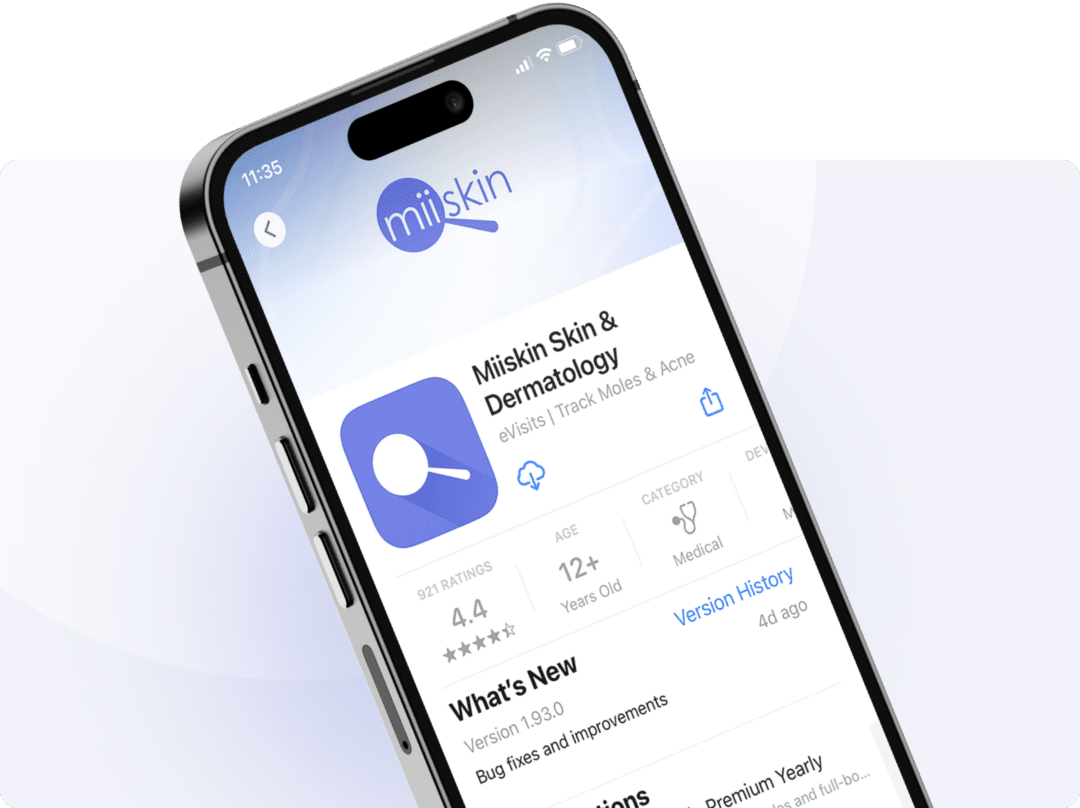
Download the Miiskin app to connect with independent, board-certified dermatologists who are licensed in your state. Answer a few questions, upload some photos and get a treatment plan in 1-2 days. Consultation price is $59 and medication renewals are only $39.
Online dermatology care is ideal for chronic dermatology conditions.
Sources:
1 http://gco.iarc.fr/today/data/factsheets/populations/900-world-fact-sheets.pdf
2 https://www.dermnetnz.org/topics/skin-cancer
3 https://www.wcrf.org/dietandcancer/skin-cancer
4 https://www.ncbi.nlm.nih.gov/pmc/articles/PMC4173121/#R1
5 https://www.ncbi.nlm.nih.gov/pubmed/28864306
6 https://www.ncbi.nlm.nih.gov/pubmed/15967921
7 https://bmjopen.bmj.com/content/4/7/e005566

